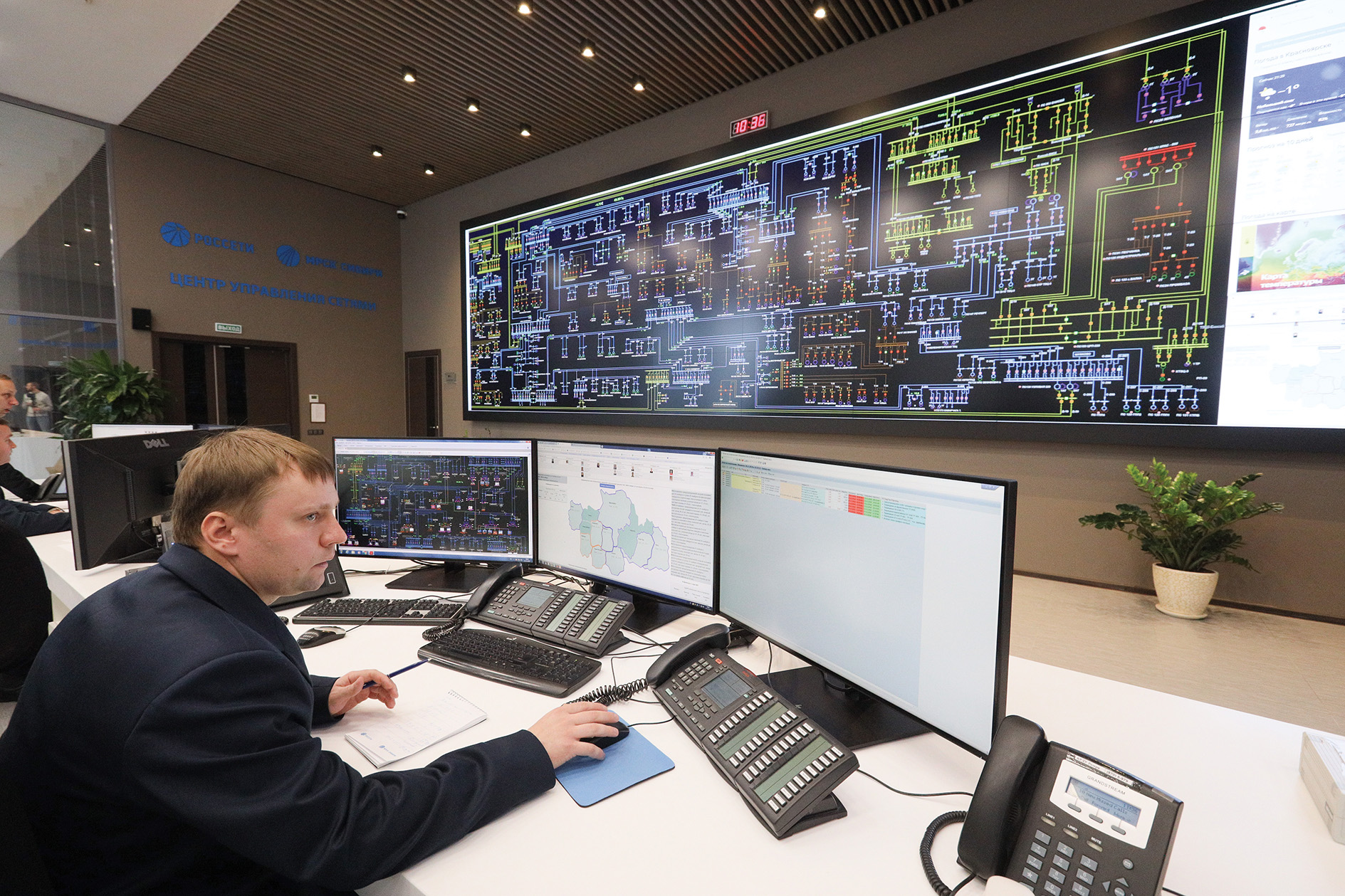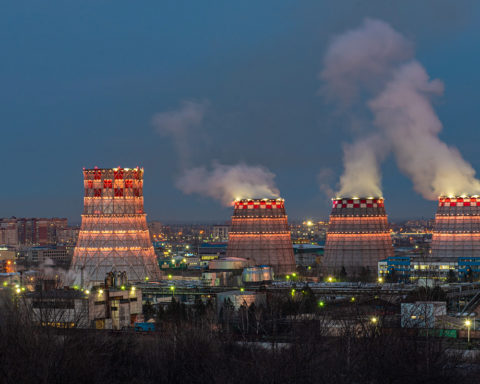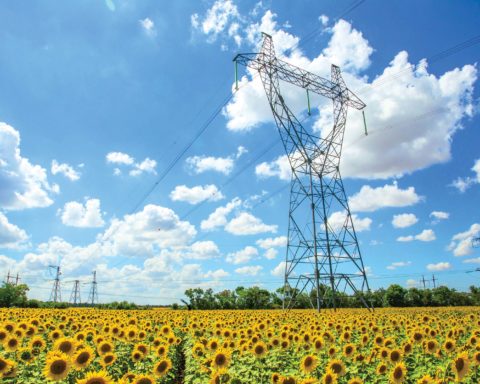Evgeny Petrovich Grabchak
Russian Deputy Secretary of Energy
Candidate of Economic Sciences
Abstract. One of the key topics in recent years in the fuel-and-energy complex, including the electric-power industry, has been the industry’s digitalization. Companies are implementing the first pilot projects, trying to optimize their usual way of doing business. At the same time, the objective of the Russian Ministry of Energy is to create favorable conditions for the application of new technologies, to give the industry impetus for the introduction of digital solutions and transition to new business models. An explosion in workforce productivity will become the indicator of success.
Keywords: digitalization, end-to-end technologies, digital data, transformation.
Nowadays, while working according to digital transformation of electric power industry we are primarily guided by the Decree of the President of Russia dated 2018. Among key objectives it outlines the guaranteed supply of affordable electric power and transformation of power infrastructure, which are achieved along with the development and application of new technologies and platform solutions, intellectual control systems, domestic “end-to-end” – i.e. having the maximum potential of economics transformation – digital technologies.
Besides, in 2019 the government accepted two key concepts: of national data management system and of state single cloud platform. These documents regulate the procedure of creation of information exchange core within each industry and necessary, economically efficient infrastructure.
Let me remind that digital economics is not only uncoordinated usage of digital technologies in customary business processes, but a new form of carrying on business and management model, which is fundamentally different from conventional approaches.
The main components of digital economics are, first of all, the data in digital format, and only secondly the package of new “end-to-end” technologies using this data. All of us – companies, Ministry of Energy – shall clearly define what we mean under digitalization, the way in which we work with data. When we are in one and the same coordinates system, we will be able to speak about fundamental changes in the industry.
The synergy of digital data and “end-to-end technologies” shall reveal new business models subject to correct combining. The key indicator of success and efficiency of certain model is the explosive growth of workforce productivity. If we see that the new management model resulted in the explosive growth of productivity, then we managed with the help of “end-to-end” technologies used, to eliminate some sort of imperfection of the existing system, improve the value chain and obtain the result we aimed at.
For this to happen the data shall be “intelligent”, i.e. clear, consistent and submitted in sufficient volume, the the technologies themselves – proven, mature, useful for required task solution and reasonable in value.
First of all, we shall properly organize data handling. There are examples in the world how the companies started to create the scaled digital models, collected a large array of digital information, tried to obtain something, but could not obtain the result, and the projects were acknowledged to be unsuccessful. This was due to the fact that, in the essence, the unstructured, not verified and unclear data were used that were impossible to apply. Handling with huge amount of unscaled, unstructured information is a dead-end road. Therefore of course we need to instill the culture of data handling, and we, understanding that, as a regulator are engaged in a huge work on standardization. In November Rosstandard signed the Orders on approval of the first national standards of series “Unified Electrical Power System and Isolated Power Systems. Information model of electric power industry. The documents are generated on the basis of international standard CIM (Common Information Model), but taking into account the Russian experience and with active support of the specialists of Ministry of Energy and companies of the sector.
The new series of standards creates a foundation for the development of common information space and the information management system in electric power sector. On the basis of CIM-standard we hope to create a common coordinates system: all data which are generated, all relationships and operations carried out in the power system will be described by one standard. With the national standard, establishing the rules of digital models of power system creation the Ministry of Energy will actively implement the principles of digital cooperation and management in the industry.
With our support the digital model of electric network from 35 kV and higher had been created, the concept of unified identification of facilities and equipment of electric power industry is under consideration, the regulatory base amendments inducing the use of digital models at all stages of life cycle are prepared. At the present moment the legal acts are nearing completion, which contain the requirements for the creation of digital models during power transmission line and substation with voltage 35–750 kV engineering. On the basis of digital models the collection of operative information will be carried out, as well as the calculation of electric power supply reliability indicators.
One of the tasks of Ministry is to create a favorable ecosystem for digital power industry and reduce the barriers on the way of high-tech business development. We need to provide the support for the development and implementation of digital platforms, support of startups, motivate the approbation of new technologies and transfer from automated manufacture to a robotic one.
The transfer from conventional to service model of resources possessing – effect purchasing instead of equipment acquisition – we consider to be the target change of business processes in the industry. The main value of infrastructure energy companies in such changes is the unique management models.
The second large massive of work under the scope of digitalization in electric power industry is the development of “end-to-end” digital technologies. It is necessary to create the conditions for their development, implementation, as well as successful examples scaling.
Power industry specifies its requirements and uses its set of digital technologies. In October the President of Russia approved the national strategy of artificial intellect development for the period op to 2030. The strategy and the roadmap distinguish six technologies: computer vision, natural language processing, voice recognition and synthesis, decision making intellectual support, prospective methods and artificial intelligence technologies.
To our opinion, the computer vision and decision-making supporting systems are the most applicable in the electric power industry, and these spheres require putting big efforts and the capital. These are two top-of-the-line things that will allow to transfer to substantial change of business processes within the sector. They will provide the possibility to transfer to life cycle contracts, will allow to a greater extent to consider the equipment as a service object. The companies will stop to operate by huge figures of investment costs and will compete inside electric power industry by the management models, which will allow to transfer to explosive growth of workforce productivity.
Digital transformation is not a set of separate measures but a complex movement aimed at strategic objectives achieving. The latest technologies allow to transfer the object of management into a digitalized form, describe and see all complex interconnections and effects. The next stage is to transform the objects management models with the help of “end-to-end” technologies. Having transferred the models of activity into a single information space, we can find the points of basic costs creation.
Needless to say that the proactivity is the target level. For example, with the help of a digital twin all the costs that nowadays are created on the stage of construction and operation of any power facility can be understood and eliminated during the design stage of the facility itself and even of the equipment being a part of the facility. Thus, being the proactive means to understand and manage the net cost of your future activity, virtually manage the life cycle of power system.
The future of electric power industry is inextricably bound up with the present. The selection of digital technologies and solutions shall be carried out in accordance with the strategy of electric power industry and current tasks development. Please note that the digital solutions and technologies ripening period is long and operating period is short. It is important to design the target-oriented business models even on early stages of planning. Each implemented technology and solution shall contain the potential of transfer to new management principles.
Nowadays both energy companies and the Ministry of Energy try to use new models of carrying on business. Our main aim is the improvement of monitoring or oversight, reduction of administrative load of industry players, as well as financial and time costs of regulator spent for inspections. The companies must focus on effective management of available production assets and resources in the course of pursuit of their activities.
The Ministry of Energy started a substantive work with digital technologies in 2016; two years later it was institutionalized in the form of official project “Uniform Technological Policy – reliability of power supply”. Currently, 25 pilot projects in different energy companies are being implemented; it is planned to complete them up to 2024. These “pilots” are aimed at not only the use of digital technologies, but at the change of separate business processes as well.
The pilot projects foresee among other things the implementation of digital remote control of the equipment and modes of power industry facilities operation, development and testing of remote monitoring systems, assessment of technical condition and forecasting the equipment failure probability. It is also planned to create a decision-making procedure regarding the management of emergency response and restoration work in case of major and mass process upsets, system of annual repair schedules planning, modernization and reconstruction on the basis of predictive analytics and equipment failure risk assessment. It is supposed that the assessment of energy companies readiness to the heating season will be completely carried out taking into account the telemetry data, and with the use of automated decision-making supporting system as well.
At the present moment several pilots are on the stage of experimental-industrial production already (monitoring of equipment and relay protection and automation means, automated information and measuring system commercial accounting of electric power in the cloud). Several projects, including the projects on forecasting analytics, are on the various stage of completion.
As I have mentioned already, in November the national standard of common information model of electric power industry – the basis for single industry-specific information space and data management system have been approved. Exactly on it the energy system digital model is created, new types of information interaction of the subjects of electric power industry, adjacent industries and consumers will be built.
This is the base of industry-specific data array collection for the implementation of forecasting analytics and advanced technologies, such as computer-aided learning, artificial intelligence. The next step is the creation of full-scale digital platform. Its prototype was tested in the Ministry of Energy with the aim of data collection for reliability indicators calculation. This approach to the creation of industry-specific information space completely satisfies the concepts of national data management system and state single cloud platform.
Digital transformation engages infrastructure, process, organizational and social aspects. The success of transformations depends on the skill of their correct development and matching. Transformation of corporate culture and work with changes are essential. For the successful digital transformation it is necessary that each specialist and manager would share its approaches and understand the necessity of it. Whilst is did not happen, we will continue to face all and the same barriers, among which there are not only and not so much the lack of financing, but the fear of transparency on all levels due to various reasons. As a consequence, we see incoherence of business strategies and the strategies of digital transformation of energy companies, unpreparedness to corporate culture transformation, unwillingness of digital changes and unpreparedness to them, absence of Russian solutions for certain technologies, lack of data handling skills, regulatory base passivity, affecting the interests of various subjects. The activity of some of them can drastically change in new conditions, and the companies see in it the threats to security, first of all to information security.
The overriding of existing barriers supposes the extensive contribution of all participants of branch ecosystem, including regulators, branch subjects, technological companies, equipment manufacturers. Nowadays, together with many participants we develop the single information space, transfer to the model of facilities and equipment life cycle, implement digital design, develop new business processes and ecosystems’ culture.
Certainly, we try to make the legal and regulatory framework consistent with effective creation, implementation and testing of new industry-specific technologies. It is not always possible to do it within the short terms: electric power industry is a fundamental, stable branch and it is very hard to make experiments in it in all directions at once. Having said so, I would like to underline the positive experience with companies with state participation, with companies, which are the natural monopolies and approve the investment programs in the Ministry of Energy of Russia. We distinguish the corresponding pilot projects and actively implement them, testing various “end-to-end” technologies, including the part of artificial intelligence technologies – computer vision and prognostics. Following the results of these pilots implementation there is the complete understanding of the way of legal and regulatory framework adjustment. We are involved in that, and upon the companies’ request are ready to consider separate indulgences, e.g. some sort of “regulatory sandboxes”.
Certainly, the layer of technical issues, which shall be solved, is quite massive at the moment, and a major part of them relates to cyber security, by we can see that the moving forward, development of necessary technologies is carried out quite actively. Thereat the main issue we have to work on is the staff. The branch companies need to have а clear idea of the future, explain the necessity of transformations to their employees. Not for nothing, even in big industrial companies, world leaders, only 1% to 5% of people are ready to work with artificial intelligence, understand what it is and agree to implement in into business processes. Therefore, first of all, it is necessary to work with internal corporate culture, i.e. start with yourself, and then we will be ready to work with advanced technologies and make another step towards the implementation of branch digital potential.
Technical assignment to pictures for Grabchak
1. Freaking awesome super-duper network management center (Huge amount of displays, all are illuminated, show the work of energy systems, a smart looking guy is thinking near one of them).
2. Futuristic picture of a huge server with great amount of data.
3. Smart urban lighting (well, cool lanterns with solar batteries. Urban lantern, which is obviously smarter than you and me).
4. Picture of beautifully illuminated Moscow at night taken from the plane.
5. Digital production. Such robots slave away, tighten nuts, and a guy with ipad keeps an eye on them so that they haven’t run away.







